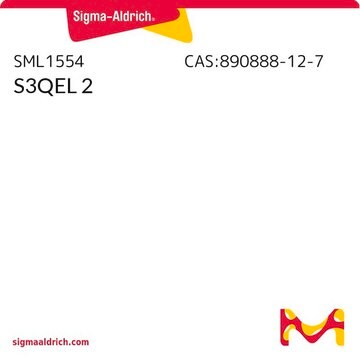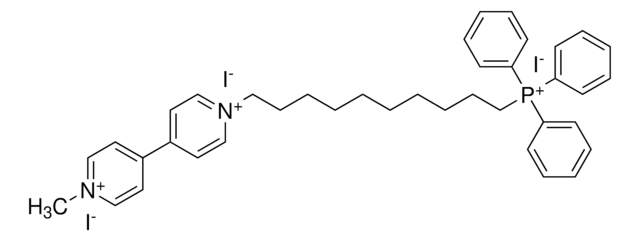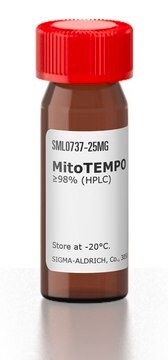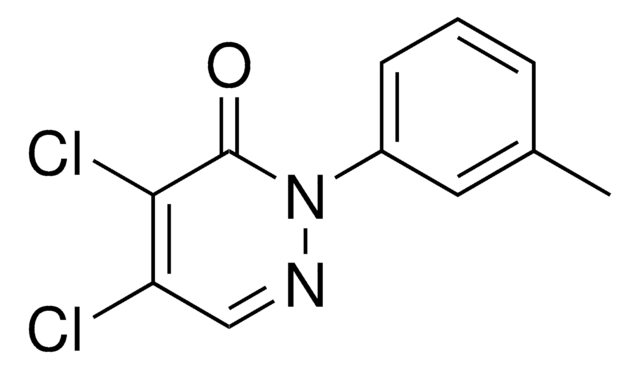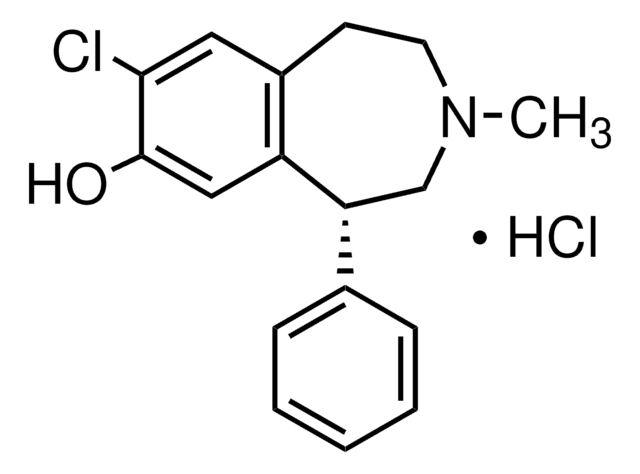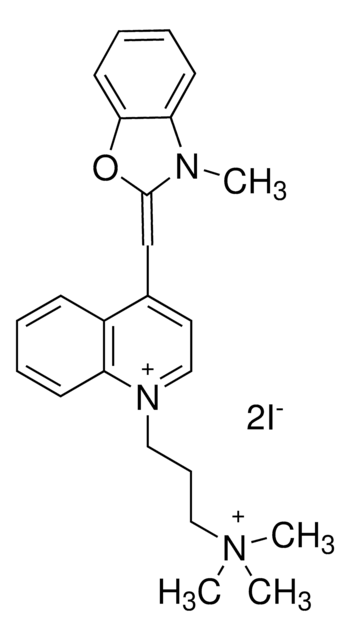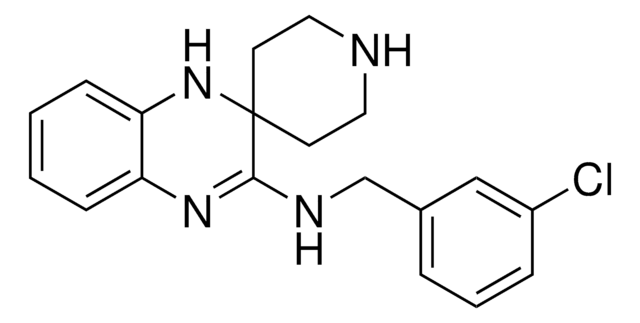SML1948
S1QEL1.1
≥98% (HPLC)
Sinônimo(s):
N1-(3-acetamidophenyl)-N2-(2-(4-methyl-2-(p-tolyl)thiazol-5-yl)ethyl)oxalamide, S1QEL
Faça loginpara ver os preços organizacionais e de contrato
About This Item
Fórmula empírica (Notação de Hill):
C23H24N4O3S
Número CAS:
Peso molecular:
436.53
Código UNSPSC:
12352200
NACRES:
NA.77
Produtos recomendados
Nível de qualidade
Ensaio
≥98% (HPLC)
Formulário
powder
cor
white to beige
solubilidade
DMSO: 2 mg/mL, clear
Condições de expedição
wet ice
temperatura de armazenamento
−20°C
cadeia de caracteres SMILES
CC1=C(CCNC(C(NC2=CC=CC(NC(C)=O)=C2)=O)=O)SC(C3=CC=C(C)C=C3)=N1
Aplicação
S1QEL1.1 has been used as a reverse electron transport (RET)-induced mitochondrial (mito) reactive oxygen species (ROS) suppressor:
- to investigate the role of mitochondrial-derived superoxide in triggering ferroptosis
- to study the mechanism involved in the regulation of anti-fungal responses of macrophages against Aspergillus infection
- in combination with mito-antioxidant to study their influence on mitochondria-derived H2O2 in cancer cells
- to determine the effect of oxidative stress depletion on myoblast differentiation
Ações bioquímicas/fisiológicas
S1QEL1.1 is a suppressor of mitochondrial respiratory complex I site IQ electron leak, suppressing superoxide and/or H2O2 production without altering oxidative phosphorylation. S1QEL1.1 had an IC50 values of 70 nM against superoxide-H2O2 production from site IQ. It decreased caspase activation in a in a cardiomyocyte cell model of ER stress and decreased ischemia-reperfusion injury in the Langendorff-perfused mouse heart model.
Suppressors of the site IQ electron leak (S1QEL)1.1 reduces cytokine secretion and fungicidal activity of macrophages infected with swollen A. fumigatus conidia by suppressing reverse electron transport (RET)-induced mitochondrial reactive oxygen species (ROS).
Código de classe de armazenamento
11 - Combustible Solids
Classe de risco de água (WGK)
WGK 3
Ponto de fulgor (°F)
Not applicable
Ponto de fulgor (°C)
Not applicable
Escolha uma das versões mais recentes:
Certificados de análise (COA)
Lot/Batch Number
Lamentamos, não temos COA para este produto disponíveis online no momento.
Se precisar de ajuda, entre em contato Atendimento ao cliente
Já possui este produto?
Encontre a documentação dos produtos que você adquiriu recentemente na biblioteca de documentos.
Martin D Brand et al.
Cell metabolism, 24(4), 582-592 (2016-09-27)
Using high-throughput screening we identified small molecules that suppress superoxide and/or H
Takujiro Homma et al.
Archives of biochemistry and biophysics, 700, 108775-108775 (2021-01-26)
Ferroptosis is a type of iron-dependent, non-apoptotic cell death, which is typically induced by cysteine starvation or by the inhibition of glutathione peroxidase 4 (GPX4) activity with the accompanying elevation in lipid peroxidation product levels. Despite the central role of
Remi Hatinguais et al.
Frontiers in immunology, 12, 641495-641495 (2021-04-13)
Reactive Oxygen Species (ROS) are highly reactive molecules that can induce oxidative stress. For instance, the oxidative burst of immune cells is well known for its ability to inhibit the growth of invading pathogens. However, ROS also mediate redox signalling
Nossa equipe de cientistas tem experiência em todas as áreas de pesquisa, incluindo Life Sciences, ciência de materiais, síntese química, cromatografia, química analítica e muitas outras.
Entre em contato com a assistência técnica